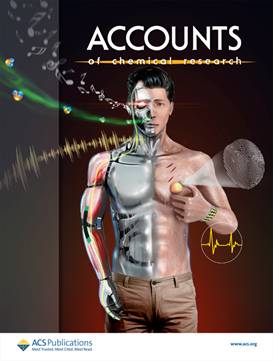News

- Address: 江苏省苏州市苏州工业园区若水路398号
- E-mail: tzhang2009@sinano.ac.cn
- TEL: 86-512-62872706
- FAX: 0512-62603079
- Website: http://nanosensor.sinano.ac.cn

Ting Zhang's research group made a series of progress in the field of flexible biomimetic sensors
Recently, Ting Zhang's research group was invited by the Journals of Chemical Research to publish a review article entitled "Materials, Structures, and Functions for Flexible and Stretchable Biomimetic Sensors.". Explain the research work of this group and related teams in the field of flexible biomimetic sensors in recent years.It reflects the bionic flexible sensor technology is an important way to achieve the efficient integration of "(machine) human-information-physical system" (Figure 1), and looks forward to the problems and development direction of this research field. (Acc. Chem. Res. 2019, 52, 288-296,Inside Cover,DOI: 10.1021/acs.accounts.8b00497)

Figure 1. Overview of bionic flexible sensors published in Accounts of Chemical Research (2019, 52, 288-296, Inside Cover)
Researcher Ting Zhang looks forward to the future development of the field from the perspectives of material design, system integration and application scenarios.For example, Development of flexible sensor devices with new biomimetic functions by introducing shape memory alloy materials, metal organic framework materials, and non-traditional molecular machines, cellular organisms, etc. into device design.Through the system design, construct intelligent flexible sensor-drive integrated system such as lightweight bionic fish and bionic bird. Hoping that the above research work and prospects will provide some ideas for promoting the next generation of intelligent nanomaterials, new biomimetic flexible sensors and their intelligent systems.
The above work was supported by the Ministry of Science and Technology Key Research and Development Program, the National Natural Science Foundation, the Jiangsu Outstanding Youth Fund and the China Post-Fund Fund. The first author of the article is Dr. Tie Li, and the master student student Yue Li is involved in the work.




